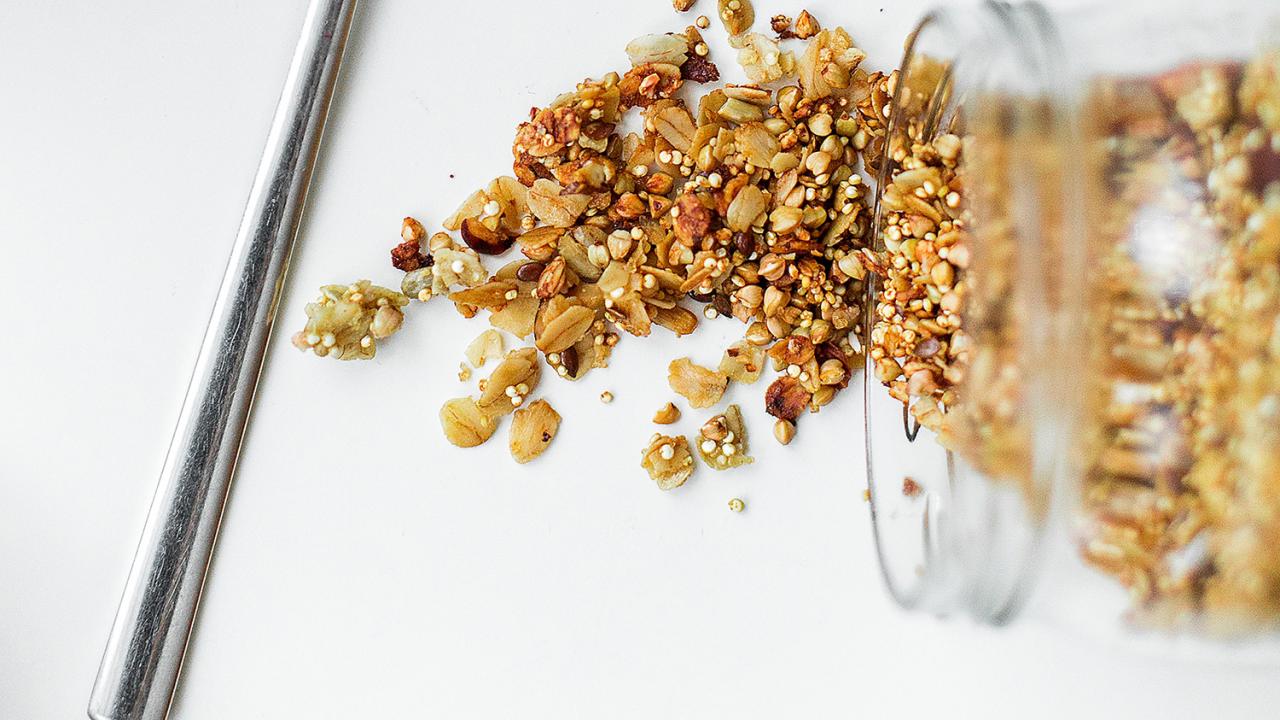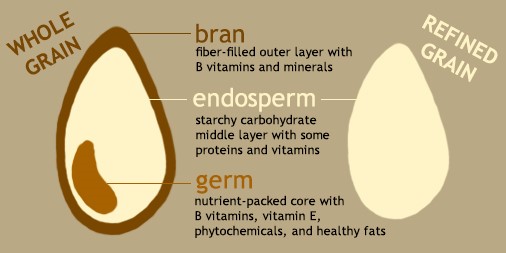
Whole Grains Month
Whole grains are one of the best sources of carbohydrates, dietary fiber, vitamins, minerals and healthy plant fat.
 As is illustrated in the diagram above, the “whole grain” hasn’t had the bran or the germ removed. Often these are removed to make the grain more shelf stable. Because removing them tends to remove nutrients too, the refined grain is ‘enriched’ with nine essential vitamins and iron. The problem is that we don’t replace everything that was removed.
As is illustrated in the diagram above, the “whole grain” hasn’t had the bran or the germ removed. Often these are removed to make the grain more shelf stable. Because removing them tends to remove nutrients too, the refined grain is ‘enriched’ with nine essential vitamins and iron. The problem is that we don’t replace everything that was removed.
If you follow a diet of limiting your carbs, you should understand that the quantity of carbohydrate you consume is much less important than the quality. There are so many different diets out there; it is easy to get confused. Carbohydrate rich foods can be very healthy or may be very unhealthy. Bread, beans, milk, popcorn, cookies, spaghetti, squash, soda pop, and rice all contain carbs. Carbohydrates provide the body with glucose, which is converted to energy for all body functions. Some carbs are better than others.
Carbohydrates that are the healthiest are those from unprocessed (or minimally processed) foods. This includes all fruits and vegetables, beans, nuts, seeds and whole grains. These foods provide carb and vitamins, minerals, fiber and a host of phytonutrients.
Less healthy sources of carbohydrates include those foods heavy in added sugar and highly refined foods. Examples include white or brown bread, cookies and other baked goods, white pasta, and white rice. These items are digested quickly and may contribute to weight gain as well as promote chronic disease.
Studies conducted both in the U. S. and other countries have shown that people consuming 70 grams/day of whole grains – compared to those who ate little or none – had a 22% lower risk of total mortality, a 23% lower risk of cardiovascular disease mortality and a 20% lower risk of cancer mortality.
How much is enough? We recommend that you fill up 1/4th of your plate with whole grains and ½ of your plate with fruits and vegetables – that is 75% of your plate full of natural, healthy carbohydrate! What is on the remaining 1/4th of your plate? Yep. A good source of protein. If you’re following the trend and moving plant forward, then you may have carb and protein on that section of the plate. Meats, cheeses and eggs have little carbohydrate, but beans, legumes, nuts and seeds do contain good carbohydrate as well as protein.
Tips to add whole grain, healthy carbs:
- Check out your breakfast cereal. It should have 5 grams of dietary fiber which usually means it is made from whole grains. Look for 8 grams or less of sugar.
- Read the Nutrition Facts panel on your favorite bread. It should contain 2 – 3 grams fiber for every 15 grams of carb. Whole grain should be towards the top of the ingredient list.
- Eat lots of fresh, seasonal fruits and vegetables. Frozen is ok too. Canned are convenient to have on hand but have salt added.
- Finally, try to have a bean meal at least once a week. Beans are not only high in dietary fiber and high quality carbs but also contain iron and calcium. Add them to the meal plan!
Check out 12 ways to easily increase your intake of whole grains
References:
https://www.hsph.harvard.edu/nutritionsource/whole-grains/
https://wholegrainscouncil.org/